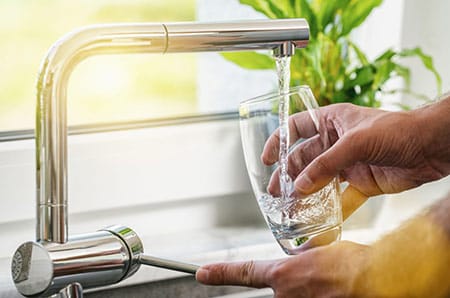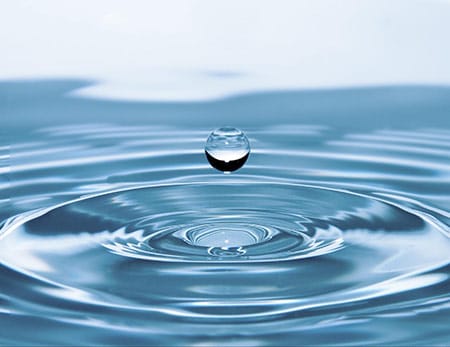Drinking Water Testing

Your drinking water is a vital resource and you should be aware of the quality of this water, particularly if you have your own well or bore hole. Science Direct Ltd. provides water testing that is designed to meet the demands of householders so that you can be better informed regarding the quality of your drinking water.
We compare your test results with the requirements of the current drinking water regulations to ensure your drinking water meets the relevant standards. We can also help you understand the significance of your water quality in terms of human health and potential problems with the household plumbing system.
Water testing

Local authority grants may be available to assist in meeting the cost of installing water treatment systems where these are required. We can help you through this process and provide the water testing service required for the application procedure.
Our drinking water testing service includes assessment for microbiology (bacteria) in the water as well as identification of common chemistry-based problems such as lime-scale, corrosion and unpleasant tastes. Our on-site laboratory, minutes from Cork City, is fully equipped and maintained to high standards of quality control.
There are a number of different tests that can be done on your water. They break down into microbiology tests, which measure the levels of harmful bacteria in the water, and chemical tests, which mostly relate to the impact the water will have on the plumbing system. The significance of the individual test parameters are explained below, and the limit values are those in the current drinking water regulations (S.I. No. 99/2023 – European Union (Drinking Water) Regulations 2023 (irishstatutebook.ie)).
Chemical Considerations:
- pH: pH is a measure of how acidic or alkaline your water is. The pH scale runs from 0 (very aid) up to 14 (very alkaline). Generally, a value of around pH 7.0 is preferred, and this is called the neutral value. In practice, optimal pH levels generally range between 6.5 and 8.5. It is crucial to monitor pH levels, as extreme values can affect water’s taste and how it interacts with your plumbing. Low pH, acidic, water often causes corrosion of copper in the hot water plumbing system and may also turn coloured hair a green colour. The pH of drinking water must be in the range of 6.50 to 9.50.
- Conductivity and Total Dissolved Solids (TDS): Conductivity is a measure of the ability of water to conduct an electrical current. Therefore, conductivity is related to the mineral content of the water and this is measured as the TDS. These parameters help determine the overall quality of your water. High conductivity and TDS indicate an increased presence of dissolved substances, often related to limescale formation. The limit for conductivity in drinking water is 2500 µS/cm. There is no limit for TDS.
- Alkalinity: Alkalinity is a measure of your water’s capacity to neutralize acids. Maintaining appropriate alkalinity levels helps stabilize the pH and prevents significant fluctuations, which could otherwise lead to undesirable taste, corrosion or limescale. There is no limit for alkalinity in the drinking water regulations.
- Hardness: Hardness refers to the amount of calcium and magnesium present in your water. Although not harmful to health, excessive hardness can lead to limescale. This is a build-up of mineral deposits in your plumbing and appliances, reducing their lifespan. This problem is worst in hot water areas, so if you have limescale in your kettle you can be sure it is also forming in more delicate appliances such as power showers, dishwashers, and washing machines. There is no limit for hardness in the drinking water regulations. The following table gives a broad indication of water hardness categories:
| Soft | up to 50 mg/l CaCO3 | Moderately hard | 151 to 250 mg/l CaCO3 |
| Moderately soft | 51 to 100 mg/l CaCO3 | Hard | 251 to 350 mg/l CaCO3 |
| Slightly hard | 101 to 150 mg/l CaCO3 | Excessively hard | over 350 mg/l CaCO3 |
- Nitrate: Nitrate in the well water originates mostly from sources such as waste discharges, animal slurries, and, in particular, artificial fertiliser. High levels of nitrate in drinking water may induce “blue baby” syndrome (methaemaglobinemia), which is an extremely dangerous condition. Water with high nitrate should never be used to prepare formula milk for babies. There is some evidence of high nitrate in drinking water having long-term health impacts on adults, especially around thyroid function. The limit for nitrate in drinking water is 50 mg/l.
- Manganese and Iron: These are two metals that occur widely in rocks and soils. When the water is underground, they can dissolve from the rocks into the water. When the water reaches the surface, the iron and manganese react with oxygen in the air. Sometimes, the water might be quite clear as it comes out of the well but over a period of a few hours the water may start to turn yellow or brown as these new iron and manganese chemicals form. In extreme cases, the water may turn bright rusty orange if there is high iron, or small, dense, black particles form if there is high manganese. As well as looking unpleasant, high manganese and iron may also affect the taste, odour, and appearance of water, cause staining of toilets and basins, and turn white laundry a nasty grey or brown colour. The limit for iron in drinking water is 200 µg/l, and for manganese 50 µg/l.
- Turbidity: Turbidity is a measure of the cloudiness of the water. This can be caused by very small particles suspended in the water, such as clay, micro-organisms, fine iron and manganese solids, or very small fragments of vegetation. For people with their own well, the turbidity should be “acceptable to the consumer”. It is a useful test for water engineers to check that any treatment systems are working correctly.
What our customers say…
Microbiological Considerations:
- E. coli and other coliform bacteria: E. coli bacteria are present in very high numbers in human or animal faeces and is rarely found in the absence of faecal pollution. As such, its presence in drinking water is a reliable indication that the source of the water has become contaminated. Coliform bacteria also indicate contamination of the supply. Regular monitoring for E. coli and other coliform bacteria is crucial to ensure your water is free from harmful microorganisms. There are zero limits for both E.coli and coliform bacteria in drinking water.
- Colony Counts at 22°C and 37°C: Colony counts (also known as Total Viable Counts) are a measurement of the total number of bacterial colonies (both harmful and harmless) in your water. After preparation, the samples are incubated at either 22°C or 37°C. While not all bacteria are harmful, a high colony count could indicate potential issues with the overall quality of your water supply. There are no limits for these bacteria tests in the drinking water regulations, but they are useful for tracking changes in water quality over time and as an indicator of potentially more serious bacterial contamination.
- Enterococci: This is another type of bacteria that originate in human or animal waste and thus their presence provides an indication that the water supply has been contaminated with faeces. There is a zero limit for Enterococci bacteria in drinking water.
Please note that Science Direct Ltd does not supply or install water treatment systems, but we can provide guidance on the types of systems that you might need based on your water test results.
Water quality can change over time, so it is recommended that your drinking water be tested on a regular basis. The EPA recommends that private drinking water supplies are checked for quality at least once per year (Take action on drinking water | Environmental Protection Agency (epa.ie)). If there is a change in the taste, odour or colour of the water, then this could be due to contamination and the supply should be assessed urgently.
